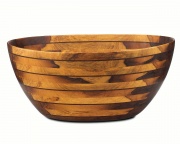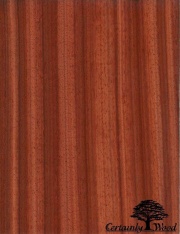Difference between revisions of "Padauk"
Jump to navigation
Jump to search
(username removed) |
(username removed) |
||
| Line 17: | Line 17: | ||
== Authority == | == Authority == | ||
| − | * | + | * G.S.Brady, ''Materials Handbook'', McGraw-Hill Book Co., New York, 1971 Comment: p. 434 |
| − | * | + | * Ralph Mayer, ''A Dictionary of Art Terms and Techniques'', Harper and Row Publishers, New York, 1969 (also 1945 printing) |
| − | * | + | * F. H. Titmuss, ''Commercial Timbers of the World'', The Technical Press Ltd., London, 1965 |
[[Category:Materials database]] | [[Category:Materials database]] | ||
Revision as of 06:45, 24 July 2013
Description
A deep red wood obtained from tropical trees, Pterocarpus indicus and Pterocarpus dalbergioides, found in southeast Asia, Africa and the Andaman islands. Padauk may have a mottled surface with bright red or black streaks. It is a hard, strong wood that is naturally durable. Padauk is used for decorative cabinetwork, turnery, veneer, piano cases and parquet. A related species, Burma padauk from the Pterocarpus macrocarpus tree has a harder more yellowish wood.
Synonyms and Related Terms
Pterocarpus indicus; Pterocarpus dalbergioides; padauk; corail (Fr.); pau rosa de Timor (Port.); amboyna; padouk; vermilion wood; corail
| Density | 45-55 ppcf |
|---|
Authority
- G.S.Brady, Materials Handbook, McGraw-Hill Book Co., New York, 1971 Comment: p. 434
- Ralph Mayer, A Dictionary of Art Terms and Techniques, Harper and Row Publishers, New York, 1969 (also 1945 printing)
- F. H. Titmuss, Commercial Timbers of the World, The Technical Press Ltd., London, 1965

